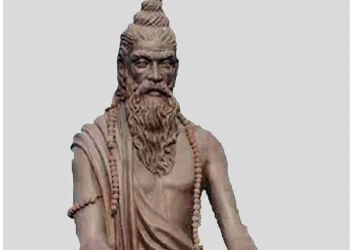Can you think of planning your most awaited trip? Imagine planning the never-happening trip to Goa. How does it go? You make exciting plans with your friends but then some of them can’t manage the dates you decide. You somehow work that out but the next day you know there are no tickets available. You go to a forceful extent to make the trip happen and buy the expensive tickets.
The day of your travel comes and with lots of excitement and a little regret of spending so much on the trip you are set to board the train. The next thing you know as you enter the station, your train is delayed for uncertain hours. With this, irritation builds up, regret comes and all the excitement is gone.
From this story, we understand the most important aspect of life. That it is hard to plan. When planning itself is difficult, you can imagine how execution would be.
Our life is full of such trivial or sometimes huge interruptions. They often distract us or sometimes stop our development as spiritual beings. Patanjali calls them the ‘Antarayas’. These are the distractions that occur on the way to self-realization.
What are the Antarayas?

A person’s self-exploration journey is characterized by two factors. One is his dedication and method towards the practice and the other is the possible problems he might face along the way. It is always better to know the nature of these problems and ways of getting past them to progress on the yogic path.
The troubles that may occur on the person’s road to self-realization through yoga are the Antarayas, literally translated as ‘impediments’ or ‘to come between’. Maharshi Patanjali elaborates them as obstacles to one’s spiritual journey.
It is important to know what problems one might encounter on his way and understand their aspects. Because when we already know the possibility of the Antarayas or impediments, we are much more capable of dealing with them when they actually come.
These Antarayas can be both physical and mental. However, if we observe them deeply, we see that even physical illnesses are caused by the mind only.
Yogasutra’s Definition of the Antarayas
We have seen in the above story how difficult the journey of our mind could be. Patanjali had studied and experimented on it centuries ago and as a guide offered to us, his Yogasutras. He elaborates the concept of Antarayas or impediments as;

‘Vyadhi Styana Samshaya Pramada Alasya Avirati Branti-darshana Alabdha-bhumikatva Anavasthitatva Chitta-vikshepa te Antarayah’
— Yoga Sutras 1.30
Yoga Sutra chapter 1 verse 30 illustrate the nine Antarayas. The literal meaning of sutra goes like this –
There are nine types of obstacles that can show up naturally in the person’s yogic way. These are physical illness, mental laziness, doubt or indecision, misplaced priorities, physical illness or inattention, cravings to satisfy the senses, confusion about the philosophy, tendency to fail or give up the practice, and inability to maintain stillness.
Yoga Sutras 1.30 Translation
According to the Yogasutras, these Antarayas result from the already existing mental troubles. Most of the time the person is unaware of his mental distress.
The stress is said to be stemming from the psychological storage of unpleasant thoughts, memories, experiences, etc. That’s why, according to Maharshi Patanjali, a disturbed mind tends to face these obstacles while he is trying to progress on the yogic journey.
Nine Antarayas
As we all understand that Yoga is a process of transformation. And any transformation brings about its own challenges. We must learn to expect these obstacles as we move forward to overcome them, rather than get discouraged by them.
Here are the nine obstacles that can hinder our yogic journey.
1. Vyadhi (Physical Illness)
Patanjali describes the first obstacle as Vyadhi, translated as physical illness. In Yoga, maintaining physical health has importance beyond our casual thoughts that ‘health is important’ while eating junk or fatty food. That’s why Patanjali insists on maintaining physical health as a part of your broader yogic journey.
It is very difficult to perform daily Yoga if you are physically weak, tired, or exhausted. You may have experienced it and taken a holiday from your yoga class if you are ill. It is impossible to even begin if you are under physical distress. That’s why Patanjali describes it as the first obstacle on the yogic path.
2. Styana (Mental Laziness)
There is a possibility that, on the person’s yogic journey, he may feel lethargy or unwillingness to do the physical or mental exercises. It is termed as Styana or mental laziness. This second obstacle is also sometimes called dullness of spirit.
In Styana, the person loses his enthusiasm with which he first started the yogic routine. We experience this tendency a lot. We excitedly enrol for a course, after some days of following the same, unchanging routine, we are bored of it.
This tendency stems from the mind. Our mind is naturally tamasic (inert or lazy). Patanjali warns us about this state of mental laziness as the second obstacle.
3. Samshaya (Doubt or Indecision)
The next obstacle that presents itself in the Yogi’s life is the state of Samshaya or doubt. In this, the person starts questioning the process. He is unable to trust his own abilities or the abilities of the Guru. It can go to the extent that the person can start questioning the existence of God himself.
It is a common feeling for us as humans. When we are faced with difficulty and unable to come out of it as we expect, we tend to blame someone else or fate or God. We come in the moment of confusion whether we are even capable of doing any good.
Patanjali says that all these thoughts arise from the disturbed mind. This state of Samshaya can make the person give up the practice of Yoga altogether.
4. Pramada (Misplaced Priorities)
Life is a matter of many factors. We never carry just one responsibility at a time. We have many. We are the employees or employers, husbands or wives, sons or daughters, social persons, and citizens of a country. While maintaining a balance among all these relations, it is possible to ignore our spiritual journey.
Patanjali calls it Pramada or distraction or negligence. It includes a state where a person is careless about his practice, or cannot prioritize his practice as important and a must-do thing. A person is so distracted by the demands of his routine that he takes no time for the important part. And even if he does find the time, he wraps it up with some careless and unrecommended, speedy practices.
5. Alasya (Physical Laziness)
The next, fifth obstacle on the path of yoga is that of physical laziness or inertia. Imagine setting an alarm for early morning and upon hearing it, still choosing not to get up. Rest is never enough. The state of inertia can prevent us from reaching our fullest potential.
This is called Alasya in the Yogasutras. It is again a physical state emerging from the lazy mental state. Laziness causes distraction and ineffectiveness by which it becomes impossible to progress on your yogic way.
6. Avirati (Cravings to Satisfy the Senses)
One of the most important factors that can derail one’s progress is impulsiveness or the need to constantly satisfy the senses. This is called Avirati by Patanjali. It is characterized by overindulgence in pleasurable things or the inability to let go of the attractions.
We experience Avirati in many situations of life. From sharing our favorite piece of cake with our sibling to watching the same series on Netflix again and again when there are more important things to do. We are just unable to stop the pleasure they give to us.
Yogasutras intelligently understand and state these cravings as the sixth obstacle on the path of Yoga.
7. Bhrantidarshana (Confusion about the Philosophy)
The mind is the master of creating its own stories of people and ideas. It not just makes these stories up but also tries to justify them based on the person’s past experiences. This is another major obstacle in the way of Yoga.
It is termed as Bhrantidarshana by Patanjali and described as the misunderstanding of the Yogic philosophy. For example, one can get too attached to a particular Yoga Guru that he thinks no other person speaks of value other than the one he believes in.
8. Alabdhabhumikatva (Tendency to Fail or Give Up)
When a yogi is stuck at some level for a long time, he is vulnerable to doubt his own progress. He comes close to quitting the practice itself. This state is described in the Yogasutras as Alabdhabhumikatva or a tendency to fail and give up.
It can result from wrong ways of practicing or also being stuck at some level without progressing ahead. The feeling of stagnation can create discouragement and leads to the stoppage of the practice. This is mentioned as the eighth obstacle in the yogic journey.
9. Anavasthitatva (Inability to Maintain Stillness)
Not being able to attain the final stage of Yogic postures is called Anavasthitatva by Patajnali. It also includes the feeling of starting all over again every time you go on the mat. A yogi can feel discouraged by this state and possibly stop the practice.
The state of Anavasthitatva can result from the inability to perform some postures or wrong methods of practicing.
These obstacles can severely impair the person’s willingness to proceed. However, Patanjali believed that knowing them itself gives us the power to overcome them.
How to overcome the obstacles (Antarayas)?
One of the most important ways to beat these obstacles is to achieve the one-pointedness state of mind. You can take up various tasks to exercise this one-pointed state. You can perform flame-gazing regularly to achieve the focus which is required to not let mind slip anywhere.
Staring at illusory images made of different forms is also a useful practice to execute concentration. When your attention is focused, the mind is less likely to be distracted from the obstacles and the person can overcome challenges.
Another must-do practice is believing in at least one truth and remembering or repeating it. This aspect is also called Japa by Patanjali. You can meditate on any object or image of your choice and repeatedly do the japa of it. This will again keep your mind on one point and expand your belief in yourself.
Antarayas occur after there is distraction or distress in mind. As soon as such a feeling is observed, you can alert yourself and prepare for the best fighting exercises to overcome the troubles. Work on not letting your distractions result in disturbance of your yogic practice.
To eliminate the distraction itself, one must practice one-pointedness as we saw earlier. A focused and resolved mind is less likely to be disturbed. If you succeed in maintaining your focus, the obstacles may not surface at all.
Final Thoughts
The journey from planning to making it a reality is challenging. You make your dream trip happen no matter what comes in the middle. Because you know at the end of this troublesome journey, there is a destination worth waiting for.
The yogic lifestyle is just the same. You begin your first Yoga class with excessive passion and dreams and as you proceed you meet the obstacles along the way. But just as you don’t hesitate to overcome the issues that come when you are on your dream trip, don’t stop your yogic journey for the same. Because at the end of this too, is a beautiful destination full of contentment and bliss!





Very informative and well written article. Thank you for the insights
very good but with Sanskrit and Hindi mention then will be better understand for reading and learning.